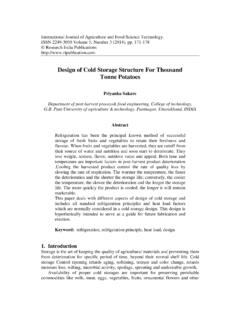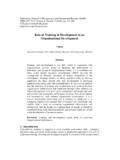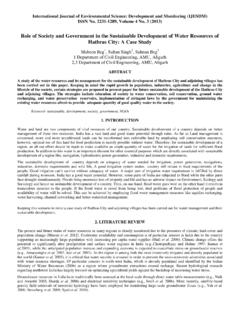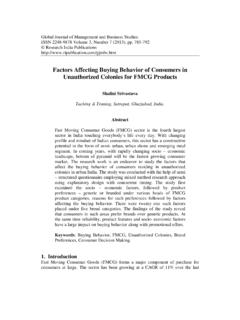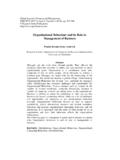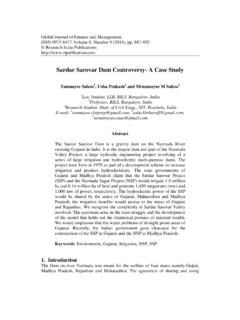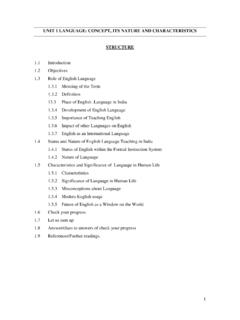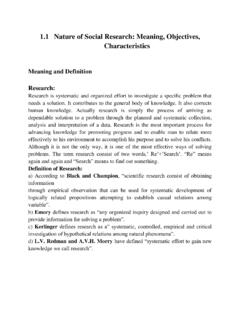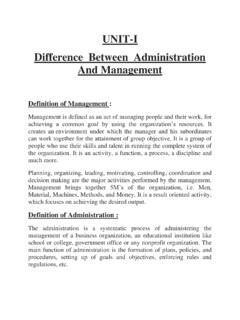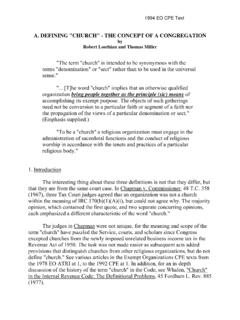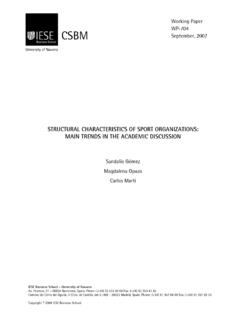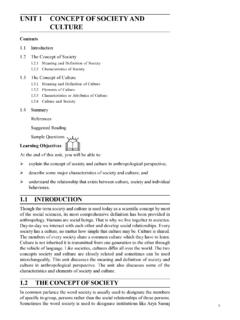Transcription of Metamaterials: Characteristics, Process and Applications
1 Advance in Electronic and Electric Engineering. ISSN 2231-1297, Volume 4, Number 1 (2014), pp. 97-106 Research India Publications Metamaterials: characteristics , Process and Applications Kaushal Gangwar1, Dr. Paras2 and Dr. Gangwar3 Department of ECE, GBPUAT Pantnagar, Uttrakhand, India. E-mail: Abstract We present a tutorial paper of distinctive properties of metamaterial, prominently negative index materials (NIM).These have permitted emerging Applications , concepts and devices to be developed in the last few years. Since a metamaterial is a material which is having negative permittivity and permeability, it can be regarded as an artificial medium with negative index of refraction.
2 Negative refraction was determined by a Snell s Law. If Metamaterial is having permittivity and permeability near zero it is called Zero- index material. Zero-index metamaterials can be used to achieve high directivity antennas. We present Metamaterial as a left-handed material which follows left hand rule. The split ring resonator acts as an artificial magnetic dipole. The gap between inner and outer ring acts as a capacitor while the rings themselves act as an inductor, resulting in an LC resonant circuit. Just below resonance, the magnetic dipole due to the split rings will lag the H field by roughly 1800 resulting in negative permeability.
3 Negative permittivity is obtained by the array of thin wire which is made of materials like aluminum, silver, and gold. We can verify the value of and theoretically with the help of mathematics. A review of the progress made in field of electronics and agriculture and Applications in telemetry, vehicles, wireless communications etc. By using Metamaterial in antenna we can increase bandwidth, reduce antenna size and increase in radiator efficiency. The most favorite application is Metamaterial absorber which is fastest growing field in the electronics, metamaterial absorber is thin, light weight, doesn t require use of expensive materials and can be used over a wide frequency range.
4 The same concept can be applied to construct an Kaushal Gangwar et al 98absorber functioning at a different frequency. Some other application of the area also discussed in the present paper. Keywords: Components; metamaterials; left-handed materials; negative-index of refraction materials; split-ring, Resonator; absorber 1. Introduction In 1898 Bose showed the possibility of existence of artificial material by conducting microwave experiment on twisted structure. Later, the physicist victor Veselgo(1968) presented theoretical investigation and Pendry et. al in 1996 used an artificial wired medium whose permittivity is negative to realize artificial electric plasma, followed by this, in 1999 magnetic plasma is realized whose permeability is negative using split-ring resonators (SRR).
5 Smith et al(2004) had realized gradient refractive index medium to bend electromagnetic waves. Metamaterial opened up a new exciting world for the scholars. The concept of negative refractive index is now widely accepted and focus of the research has moved toward Applications . The word was first coined by Rodger M. Walser (2001) who gave the following definition Metamaterials are defined as macroscopic composites having a man-made, three dimensional, periodic cellular architecture designed to produce an optimized combination, not available in nature, of two or more responses to a specificexcitation.
6 Metamaterials are artificial periodic structures with lattice constants that are much smaller than the wavelength of the incident radiation. Therefor providing negative refractive index characteristics 2. Theory of Metamaterials This word is a combination of meta and material , Meta is a Greek word which means something beyond, altered, changed or something advance as presented in Sihovola (2007).In a precise way, Metamaterials can have their electromagnetic properties altered to something beyond what can be found in nature. They are typically man made material .some theoretical study is being presented here.
7 Theoetical Aspects Metamaterial can be characterized by using Maxwell equations (DaviBibiano 2010). Transformation of Maxwell equations have a prominent role in describing Metamaterial which is given below Maxwell equation in time domain: = ; . = ( ) = + . =0 ( ) For the plane wave these equations can be reduced to = ; = ( ) Metamaterials: characteristics , Process and Applications 99 Therefore, for positive and , , and form a right handed orthogonal system. When and are negative the equation ( ) changes to, = ; = ( ) The above case shows left handed materials and their opposite direction and left hand triplet of , and.
8 3. Classification and Properties Materials can be classified on the basis of and in four quadrants as shown in figure-1. The first quadrant ( >0, >0) represents right handed material (RHM).The forward Propagation of wave takes place in the first quadrant. It is commonly used material. It follows the right hand thumb rule for the direction of propagation of wave as described in S. Ramakrishna (2013). The second quadrant ( < 0 and > 0) describes electric plasmas which support evanescent waves. It is also called ENG (epsilon negative) material. The fourth quadrant ( > 0 and < 0) also supports evanescent, corresponding toMNG (mu negative material) Fig.
9 1: Classification of material on the basis of and . The third quadrant ( <0, <0) represents Metamaterial, also called left handed material or double negative material(DNG).It follows the left handed rule because propagation of wave takes place in backward direction in this medium. Due to negative and negative the refractive index of the medium is calculated to be negative .Thus also termed as NIM (negative index material). Electric vector E, electromagnetic vector H and wave vector k forms the left hand triplet as shown in fig. By using the property of third quadrant, the first left handed test Kaushal Gangwar et al 100 Structure was used which was the combination of material with negative permittivity (thin wire) and negative permeability (SRR) Fig.
10 2: First left-handed test structure arraymade by the San Diego group (courtesy D R Smith). Effect on Snell s law: In the third quadrant Refractive index in the Snell s law is negative. N. Engheta (2006) described that an incident wave faces negative refraction at the interface Ray bends in inside direction after refracting in to medium which is contrary to positive index medium as shown in fig. Light is refracted in a contrary way as compared to the normal right handed material . Fig. 3: Comparison of Snell s law in different medium. 4. Strucure of Unit Cell Metamaterial are usually implemented in a periodic structure.
